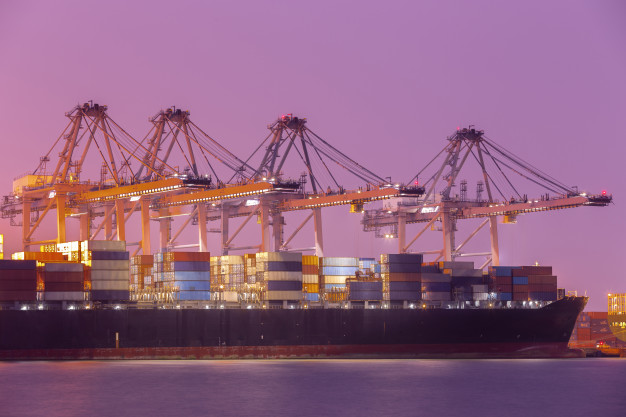
Organizations that look to offer merchandise or administrations to the U.S. Division of Guard or unfamiliar governments – i.e., safeguard temporary workers and subcontractors – know this reality generally very well. All things considered, U.S. export controls are as voluminous as they are perplexing. A few controls even resist good judgment—yet they are the standards and should be followed. Thus, guard contractual workers and subcontractors frequently feel overpowered by a reiteration of issues, including Which export controls are important to agree to, and which don’t make a difference in a given business’ specific case?
What controls should be organized over others—and how might a business realize that?
In what manner can a protection contractual worker or subcontractor have certainty that their endeavors to consent to export control laws are thorough, right and hence, fruitful?
The difficulties don’t end there. As the years progressed, numerous safeguard contractual workers and subcontractors have inaccurately expected that having a Division of Protection or other government contract close by naturally permits them to make related exports. While this may appear to be sensible, it’s an inaccurate presumption. Organizations must, indeed, either verify that the export fits the bill for an exclusion or exemption from permit prerequisites or in any case acquire an export permit for the products or potentially benefits they look to give as a feature of any agreement—and that happens through the U.S. State Office or Trade Division. Inability to do so can trigger genuine managerial, common and criminal results, including yet not restricted to:
- Held onto shipments
- Loss of export advantages
- Up to $1.2M per common infringement
- Suspension and debarment from government contracting
- Reputational harm
- Damage to U.S. public security
This is a preface to an unavoidable truth: Protection organizations manage one of a kind export compliance concerns—yet 100% compliance with all pertinent export controls is fundamental. Nothing less puts your business at significant danger.
At the Export Compliance Preparing Foundation, we comprehend the difficulties that safeguard temporary workers and subcontractors face. We have fabricated our business around the objectives of improving U.S. export control compliance and aiding guard and protection related organizations, all things considered, and scopes accomplish compliance and keep it up over the long haul.
A Concise Export Control Framework Introduction for Protection Temporary workers
In this way, what includes the U.S. export control framework? As a general rule, it’s really an interrelated arrangement of significant export control guidelines, expanded by a few optional administrative levels. The most conspicuous of these is the Global Traffic in Arms Guidelines—most usually known as the ITAR.
Worldwide Traffic in Arms Guidelines (ITAR) for Guard Contractual workers and Subcontractors
The ITAR is the consistent beginning stage to decide whether your items, advancements or administrations fall under its purview. Basically, the ITAR is a bunch of rules which controls different exercises identified with safeguard articles and guard administrations. Anybody in the U.S. who makes, exports or incidentally imports protection articles, or gives guard administrations, should enroll with the Branch of State’s Directorate of Safeguard Exchange Controls (DDTC) (www.pmddtc.state.gov). Exports, reexports, retransfers and impermanent imports of protection articles, and outfitting safeguard administrations require DDTC approval, as do fabricating abroad and arms facilitating.
The safeguard administrations and guard articles controlled by the ITAR are distinguished on the U.S. Weapons Rundown (USML), which incorporates a wide exhibit of things which DDTC has decided give a basic military or insight advantage. The USML itself comprises 21 particular classifications coordinated around expansive stages or groupings, for example, airplanes, ground vehicles and guns. Every one of these classes incorporates unmistakable things, programming, specialized information and protection administrations. Disarray frequently emerges about whether all “guard related” things are dependent upon the ITAR. This isn’t the situation, however a cautious survey of the USML is fundamental in finding out if the ITAR is pertinent to your business.
Export Organization Guidelines (EAR) for Protection Contractual workers and Subcontractors
Imagine a circle that speaks to the universe of export compliance guidelines and controls, at that point draw a little wedge inside it. That wedge, figuratively, speaks to things constrained by the ITAR. Of all the export exercises and issues individuals consider, that little wedge gathers a lot of consideration since it’s profoundly managed and testing to conform to from numerous points of view.
In any case, the rest of the circle – i.e., the vast larger part – speaks to things that are dependent upon the EAR. To be sure, the EAR controls almost everything under the authority of the U.S. government which isn’t dependent upon the ITAR. To be explicit, the EAR controls business products, double use things and numerous military things that are not on other export control records, for example, the USML. Know, however, that a few things fall outside the ITAR or EAR’s purview and are liable to control by other government offices
The EAR requires a permit dependent on the applicable things, end use, gatherings and nations engaged with a possible export. All things considered, most exports under EAR purview might be made without a permit—the test is in effectively recognizing the exchanges which require a permit. In the event that you look to export, and do so consistently, the weight of examining exchanges to decide whether a permit is required falls on you. In such a manner, you should actualize strategies for investigating exports to decide when a permit is required.
To decide if your thing is dependent upon the EAR, and how severely it is controlled for export, you should cautiously audit the Vessel sanctions Screening Business Control Rundown (CCL). Inside the CCL there are 10 unmistakable classifications, each with five item gatherings. Every individual section in the CCL is an Export Control Characterization Number (ECCN). Search for the ECCN that coordinates your thing—and in case you’re uncertain, you ought to get the correct preparation or talk with an accomplished export proficient to be sure beyond a shadow of a doubt.








